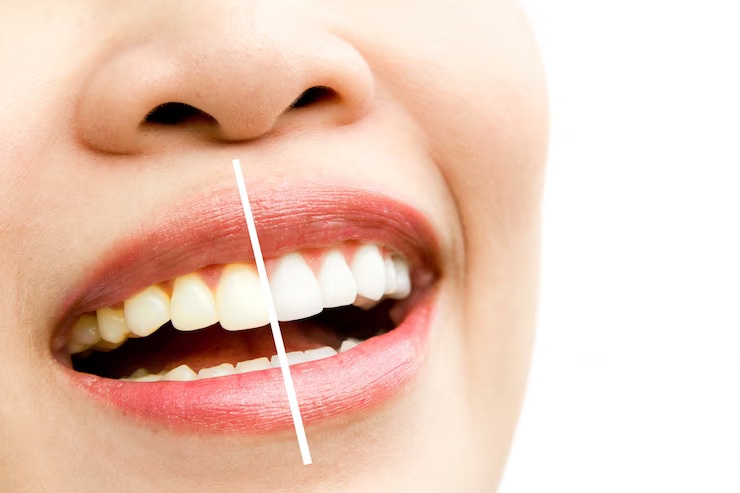A bright, white smile is often associated with confidence and good oral hygiene. Teeth whitening has become a popular cosmetic dental procedure, allowing individuals to achieve a more vibrant smile. I
f you're considering teeth whitening but need help figuring out where to start, this guide will provide the essential information you need.
Understanding Teeth Discoloration:
To effectively address teeth discoloration, it's important to understand its causes. Common factors that contribute to tooth staining include:
- Extrinsic Stains: These are surface stains caused by external factors such as food, beverages (like coffee, tea, and red wine), tobacco, and poor oral hygiene.
- Intrinsic Stains: Intrinsic stains occur within the tooth structure and may be caused by aging, trauma, certain medications, or excessive fluoride exposure during tooth development.
Teeth Whitening Methods:
There is best teeth whitening treatment available, from professional treatments to at-home options. Here are some of the most common approaches:
- Professional In-Office Teeth Whitening:
Dental professionals conduct professional in-office teeth whitening and deliver fast and dramatic results. It involves the application of a high-concentration bleaching agent to the teeth, often activated by a specialized light or laser. This method offers the most significant improvement in a short amount of time, making it a popular choice for individuals seeking immediate results.
- At-Home Teeth Whitening Kits:
At-home teeth whitening kits offer convenience and affordability. These kits typically include custom-fitted trays and a lower-concentration bleaching gel. You fill the trays with the gel and wear them for a designated period, either during the day or overnight. Although they may take longer to achieve noticeable results compared to in-office treatments, at-home kits can still provide effective teeth whitening when used consistently.
- Whitening Strips:
Whitening strips are a popular over-the-counter option. They are thin, flexible strips coated with a peroxide-based whitening gel. You apply the strips directly to your teeth and leave them on for the recommended duration. Whitening strips offer convenience and affordability, but they may not be as effective as professional treatments or custom-fitted trays.
- Whitening Toothpaste:
Whitening toothpaste is a non-invasive and easy-to-use option for maintaining teeth whiteness. These kinds of toothpaste contain mild abrasives and chemical agents that help remove surface stains. While they can provide subtle whitening effects over time, they are more suitable for maintaining results after a professional treatment or as a preventive measure against future discoloration.
- Natural Remedies:
Some people opt for natural remedies for teeth whitening. Examples include brushing with baking soda or rinsing with hydrogen peroxide. However, it's important to use these remedies cautiously, as excessive or improper use may lead to enamel erosion or gum irritation. It's always best to consult with a dental professional before trying any home remedies.
Conclusion
Teeth whitening can enhance your smile and boost your confidence. Whether you choose professional in-office treatments, at-home kits, whitening strips, whitening toothpaste, or natural remedies, you must consider your preferences, budget, and desired results. Consulting with a dental professional will help you determine the most suitable teeth whitening method for your needs. Remember, maintaining good oral hygiene practices, including regular brushing, flossing, and dental check-ups, is key to long-lasting results and a healthy smile.


No comments yet